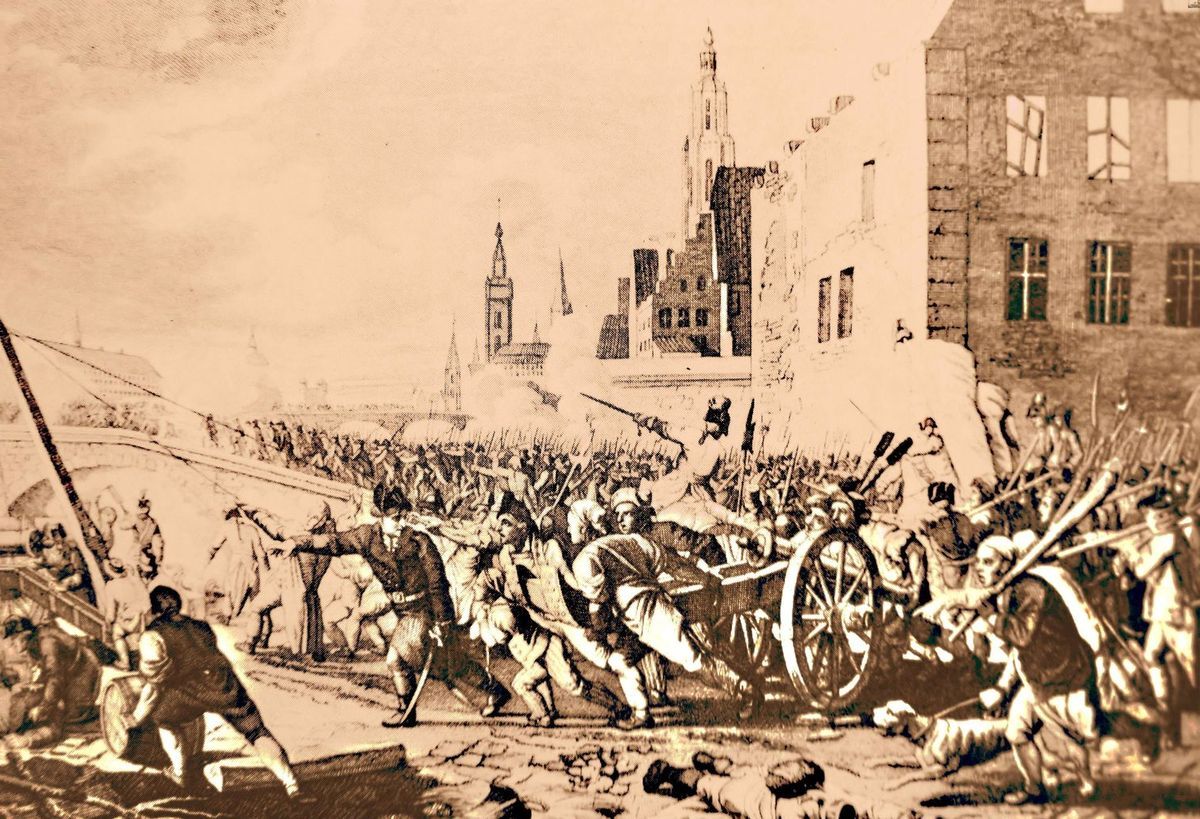
What was the Brabant Revolution? The Brabant Revolution was a short-lived but significant uprising in the Austrian Netherlands, now Belgium, from 1789 to 1790. It was sparked by discontent with Emperor Joseph II's sweeping reforms, which many saw as an attack on traditional rights and privileges. The revolutionaries, inspired by Enlightenment ideas, sought to establish an independent republic. They managed to overthrow Austrian rule temporarily, creating the United States of Belgium. However, internal divisions and lack of foreign support led to the revolution's collapse, and Austrian forces quickly regained control. Despite its failure, the Brabant Revolution planted seeds of nationalism and resistance that would influence future movements.
Key Takeaways:
- The Brabant Revolution was a short-lived uprising in Belgium against Austrian rule, inspired by American and French Revolutions, and led to increased political awareness and a sense of national identity.
- Despite its failure, the Brabant Revolution inspired future movements for Belgian independence and remains a symbol of resistance and the fight for freedom in Belgian history.
The Brabant Revolution: A Brief Overview
The Brabant Revolution was a significant uprising in the Austrian Netherlands (modern-day Belgium) during the late 18th century. This revolt against Habsburg rule was driven by a desire for independence and greater autonomy. Here are some fascinating facts about this pivotal event in European history.
- The Brabant Revolution began in 1789 and lasted until 1790.
- It was primarily a response to the reforms imposed by Emperor Joseph II of Austria.
- The revolution was named after the Duchy of Brabant, a key region in the Austrian Netherlands.
- The main grievances were against Joseph II's centralizing and secularizing policies.
- The revolutionaries were inspired by the American and French Revolutions.
Key Figures and Leaders
Understanding the key players in the Brabant Revolution helps to grasp its significance and outcomes. Here are some notable figures who played crucial roles.
- Hendrik Van der Noot was one of the revolution's primary leaders.
- Jean-François Vonck was another prominent leader, often at odds with Van der Noot.
- The revolutionaries were divided into two main factions: the Statists and the Vonckists.
- The Statists, led by Van der Noot, favored a return to traditional privileges and local autonomy.
- The Vonckists, led by Vonck, sought more radical reforms and democratic principles.
Major Events and Battles
The Brabant Revolution was marked by several key events and battles that shaped its course. These moments were crucial in determining the revolution's success and eventual failure.
- The revolution officially began with the capture of the city of Ghent in October 1789.
- The Battle of Turnhout in November 1789 was a significant victory for the revolutionaries.
- The revolutionaries declared independence from Austrian rule on January 11, 1790.
- The United Belgian States was the name given to the newly declared independent state.
- The revolutionaries faced internal conflicts and external pressures, leading to their downfall.
The Aftermath and Legacy
The Brabant Revolution, though short-lived, left a lasting impact on the region and its people. Its legacy can be seen in various aspects of Belgian history and culture.
- The revolution ended with the return of Austrian control in December 1790.
- The Treaty of Reichenbach in 1790 played a role in the revolution's end.
- Despite its failure, the revolution inspired future movements for Belgian independence.
- The ideas of the revolution influenced the Belgian Revolution of 1830.
- The Brabant Revolution highlighted the growing desire for self-determination in Europe.
Cultural and Social Impact
Beyond the political and military aspects, the Brabant Revolution had significant cultural and social implications. These changes affected the daily lives of the people in the region.
- The revolution led to increased political awareness and participation among the populace.
- It fostered a sense of national identity and unity among the Belgian people.
- The revolution's failure exposed the limitations of regional uprisings against powerful empires.
- The cultural memory of the revolution is preserved in Belgian literature and folklore.
- The Brabant Revolution remains a symbol of resistance and the fight for freedom in Belgian history.
The Lasting Impact of the Brabant Revolution
The Brabant Revolution left a significant mark on European history. It showcased the power of popular uprisings against oppressive regimes. Though it was short-lived, the revolution inspired future movements and highlighted the desire for self-governance and freedom. The United Belgian States, though brief, symbolized the potential for unity among diverse regions. This period also emphasized the importance of constitutional rights and civil liberties.
Understanding the Brabant Revolution helps us appreciate the struggles for independence and democracy that have shaped modern Europe. It reminds us that even small, seemingly fleeting events can have lasting effects on the course of history. The bravery and determination of those who fought in the Brabant Revolution continue to inspire those who seek justice and equality today.
Frequently Asked Questions
Was this page helpful?
Our commitment to delivering trustworthy and engaging content is at the heart of what we do. Each fact on our site is contributed by real users like you, bringing a wealth of diverse insights and information. To ensure the highest standards of accuracy and reliability, our dedicated editors meticulously review each submission. This process guarantees that the facts we share are not only fascinating but also credible. Trust in our commitment to quality and authenticity as you explore and learn with us.
